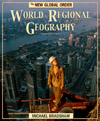Study the Key Terms listed in this chapter. Consult the glossary as needed.
|
_____ Build-operate-transfer project
|
a. prices are free to respond to supply and demand
|
|
_____ Centralization
|
b. government spending is balanced with taxes
|
|
_____ Council for Mutual Economic Assistance
|
c. private construction projects paid for by tolls or fees to be
eventually turned over to the government
|
|
_____ Extensive economic system
|
d. money supply is managed to prevent inflation
|
|
_____ Financial reform
|
e. trade barriers are removed and currencies become convertible
|
|
_____ Fiscal policy
|
f. Soviet method of adding inputsto increase production
instead of improving productivity
|
|
_____ Fordist organization
|
g. centrally planned production within economic sectors rather than
on regional strengths
|
|
_____ Monetary control
|
h. integrated economic activities between the Soviet Union and Eastern
Europe
|
|
_____ Price reform
|
i. manufacturing is emphasized
|
|
_____ Privatization
|
j. capital allowed to flow to profit-making enterprises
|
|
_____ Trade reform
|
k. state owned enterprises are sold to private ownership
|
|
_____ Black earth soils
|
a. good soils often formed beneath grasslands
|
|
_____ Brown earth soils
|
b. poor soils often formed beneath coniferous forests
|
|
_____ Midlatitude continental interior climate
|
c. trees cannot grow, but grasses and low shrubs can
|
|
_____ Northern coniferous forest
|
d. good soils often formed beneath deciduous forests
|
|
_____ Permafrost
|
e. also known as taiga
|
|
_____ Podzol soils
|
f. one of the world's major arable regions
|
|
_____ Steppe grasslands
|
g. very cold winters and hot summers
|
|
_____ Tundra
|
h. permanently frozen ground
|



 2002 McGraw-Hill Higher Education
2002 McGraw-Hill Higher Education